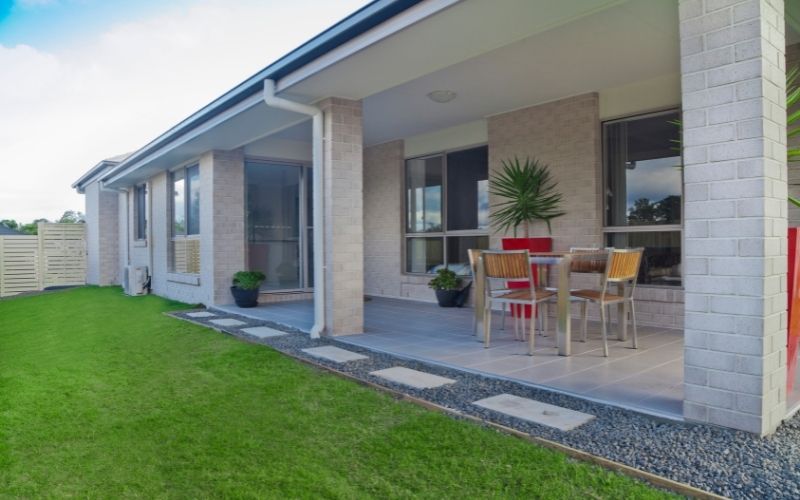Homebuyers are commonly on the lookout for some of the most common problems like electricals, plumbing, and structural issues. But, there’s something a little less obvious that can cause bigger problems – weep holes (or the lack thereof.)
What is a weep hole?
Weep holes are small, square, or rectangular holes in the brick walls of a house. They are often seen near windows (look closely and you can see them beneath the windows in the photo above) and doors but can be found anywhere in brick walls. There are various reasons for a home to have weep holes, such as ensuring a brick house has good ventilation and drainage.
How do weep holes work?
For drainage, weep holes work by giving way for water to drain out of the cavities of a home when it rains. Weep holes stop moisture and water from becoming trapped in the walls. For ventilation, weep holes enable air to reach the back of the wall inside the wall cavity. This ventilation keeps the cavity nice and dry. It also helps reduce the occurrence of dry rot and dampness that typically builds up when moisture enters an unventilated space.

Why are weep holes needed in your walls?
It is often a misunderstanding that brickwork is waterproof. It’s not. When a wall cavity has moisture and water that has nowhere to go, bricks absorb the moisture because they are porous. When bricks retain moisture like this, they can cause quite a bit of damage. Firstly, they can soak up salts from the grouting, which, in turn, react with the tannins in timber or wallpaper, creating unsightly stains. Secondly, moisture in brickwork and grouting leads to cracking and, as mentioned above, dry rot and mould.
Why shouldn’t you cover weep holes?
Often we come across houses that have no weep holes in brick, or they are substantially covered. Why are there no weep holes? The reasons vary, but the house’s builder forgot to include them, or the homeowners didn’t want them. Sometimes homeowners don’t want weep holes because they retract from the house’s appeal – think smoothly rendered brick houses. Unfortunately, a brick house without weep holes is not compliant with the Building Code of Australia. The Australian Standard for brickwork AS 3700-2018 for Masonry Structures Section 4.7.2 states, “Weepholes shall be provided to drain moisture from or through masonry construction. Where flashings are incorporated in the masonry, weep holes shall be provided in the masonry course immediately above the flashing, at centres not exceeding 1200 mm.” Houses without weep holes are at risk of dry rot, damp, cracking in the brickwork and other structural issues.

There’s also another kind of weep hole cover-up that many people miss – gardens. Just because a house has weep holes doesn’t mean you can hide them; there’s a good reason for them being there. Things like garden beds, stones, timber (including decking) should be at least 75mm below a weep hole. The homeowner’s responsibility is to inspect the weep holes regularly to ensure they’re not blocked or that termites haven’t entered. It’s essential to minimise the ability of termites to enter weep holes via moist mulch or timber that is close by.
As you can see, small holes can make such a massive difference to a home and its future value. Just imagine what might be hiding behind the walls if you come across a property without weep holes or a house with weep holes hiding behind garden beds. Keep your eyes peeled for these necessary holes on your next viewing, and have a building and pest inspection completed for a more in-depth check.
